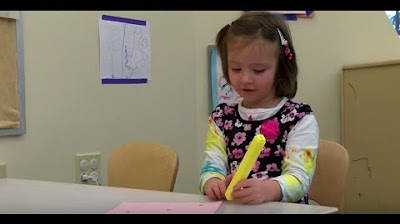Old People's Home For 4 Year Olds | First Look
Summary
TLDRThis video highlights the transformative impact of intergenerational connections, where children and older adults engage with one another. Through heartfelt moments and candid reflections, it portrays the emotional and physical benefits of such interactions, particularly for elderly individuals who experience depression, mobility challenges, or isolation. A powerful narrative unfolds as older individuals find joy, purpose, and improved well-being through the presence of children, emphasizing the healing power of companionship and community. The story is a testament to the joy and vitality that such relationships bring to both generations.
Takeaways
- 😀 The primary challenge faced is the misconception that people are in care settings only to be taken care of, when in fact they are there to live out their final years.
- 😀 The emotional impact on individuals, particularly children, is highlighted, as their experiences can be both frightening and impactful.
- 😀 Personal introductions in care environments, such as a friendly exchange with children, can break the ice and create connections.
- 😀 There is an expectation that health assessments will show improvements in mood, mobility, and overall health.
- 😀 Simple physical exercises like squeezing objects can have positive effects on individuals' physical health and well-being.
- 😀 The emotional toll of depression and low moods is shared, with individuals expressing how they sometimes feel very low.
- 😀 Positive examples are provided, such as the involvement of grandparents who, despite not being as old, show significant mobility and balance improvements through interaction with children.
- 😀 The presence of children encourages elderly individuals to engage more actively, creating a sense of purpose and motivation to stay mobile.
- 😀 The use of mobility aids like walkers can significantly improve people's ability to navigate their environment and feel secure.
- 😀 A bond quickly forms between the elderly and children, suggesting that interactions between generations can have enriching and joyful outcomes.
Q & A
What is the primary issue discussed in the script?
-The primary issue discussed is the misconception that people are in a care setting to be looked after, rather than the reality that they are there to live out the rest of their lives.
How does the speaker feel about the children involved in the activities?
-The speaker expresses a deep connection with the children, even stating they have fallen in love with them immediately.
What does the speaker expect to see as a benefit from the activities?
-The speaker expects to see benefits related to mood improvement, mobility enhancement, and overall health improvement for the individuals involved.
What physical condition does the speaker mention in the script?
-The speaker mentions experiencing depression at times and feeling very low, which may suggest a mental health struggle.
What is the relationship between the elderly and the children in the script?
-The elderly individuals are seen benefiting from the presence of children, which improves their mobility and balance. The children bring a sense of joy and engagement to the elderly.
What is the significance of the statement 'I don't walk anywhere without the walker'?
-This statement indicates the speaker’s reliance on a walker for mobility, emphasizing the physical challenges faced by the elderly or those with mobility issues.
What are the positive outcomes mentioned from the activities involving children?
-The activities with children bring a joyful existence and result in visible improvements in health and well-being for both the elderly and the children.
What role do children play in the script’s context?
-Children help to encourage elderly individuals to be more active, participate, and improve their physical abilities like mobility and balance.
What is the tone of the speaker regarding their involvement with the children?
-The speaker is pleasantly surprised by how much they are enjoying their interaction with the children, despite initially stating they weren’t good with little people.
Why does the speaker mention the need to squeeze tightly?
-The speaker asks someone to squeeze tightly, likely as part of an activity aimed at assessing their physical strength or health as part of the process to measure improvement in mobility.
Outlines

Этот раздел доступен только подписчикам платных тарифов. Пожалуйста, перейдите на платный тариф для доступа.
Перейти на платный тарифMindmap

Этот раздел доступен только подписчикам платных тарифов. Пожалуйста, перейдите на платный тариф для доступа.
Перейти на платный тарифKeywords

Этот раздел доступен только подписчикам платных тарифов. Пожалуйста, перейдите на платный тариф для доступа.
Перейти на платный тарифHighlights

Этот раздел доступен только подписчикам платных тарифов. Пожалуйста, перейдите на платный тариф для доступа.
Перейти на платный тарифTranscripts

Этот раздел доступен только подписчикам платных тарифов. Пожалуйста, перейдите на платный тариф для доступа.
Перейти на платный тарифПосмотреть больше похожих видео

Treatment of Depression in Older Adults | Evidence-Based Practices

When Do Childhood Memories Fade?

¿Qué es la década del envejecimiento saludable?

Counting: Supporting Mathematical Development in Young Children

Stolen Children | Residential School survivors speak out

Why we should all be reading aloud to children | Rebecca Bellingham | TEDxYouth@BeaconStreet
5.0 / 5 (0 votes)
